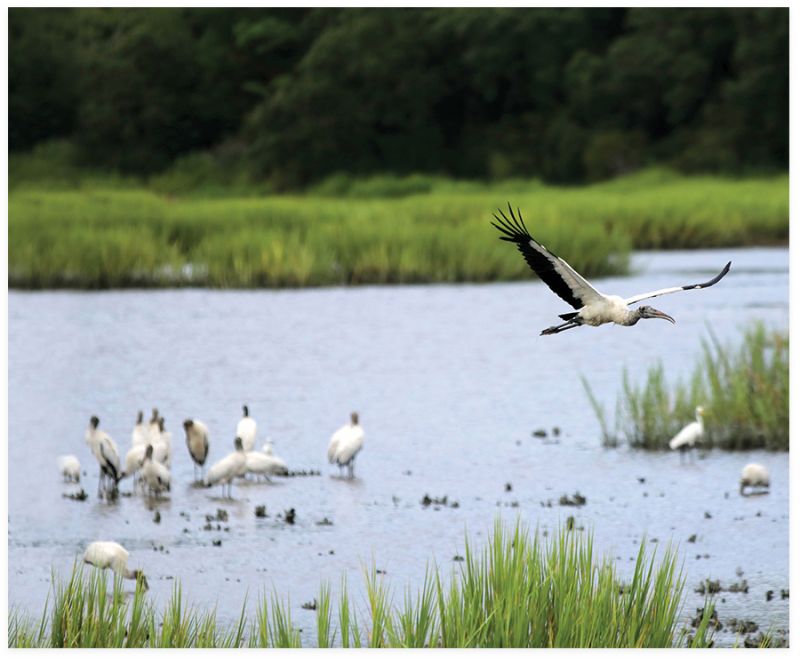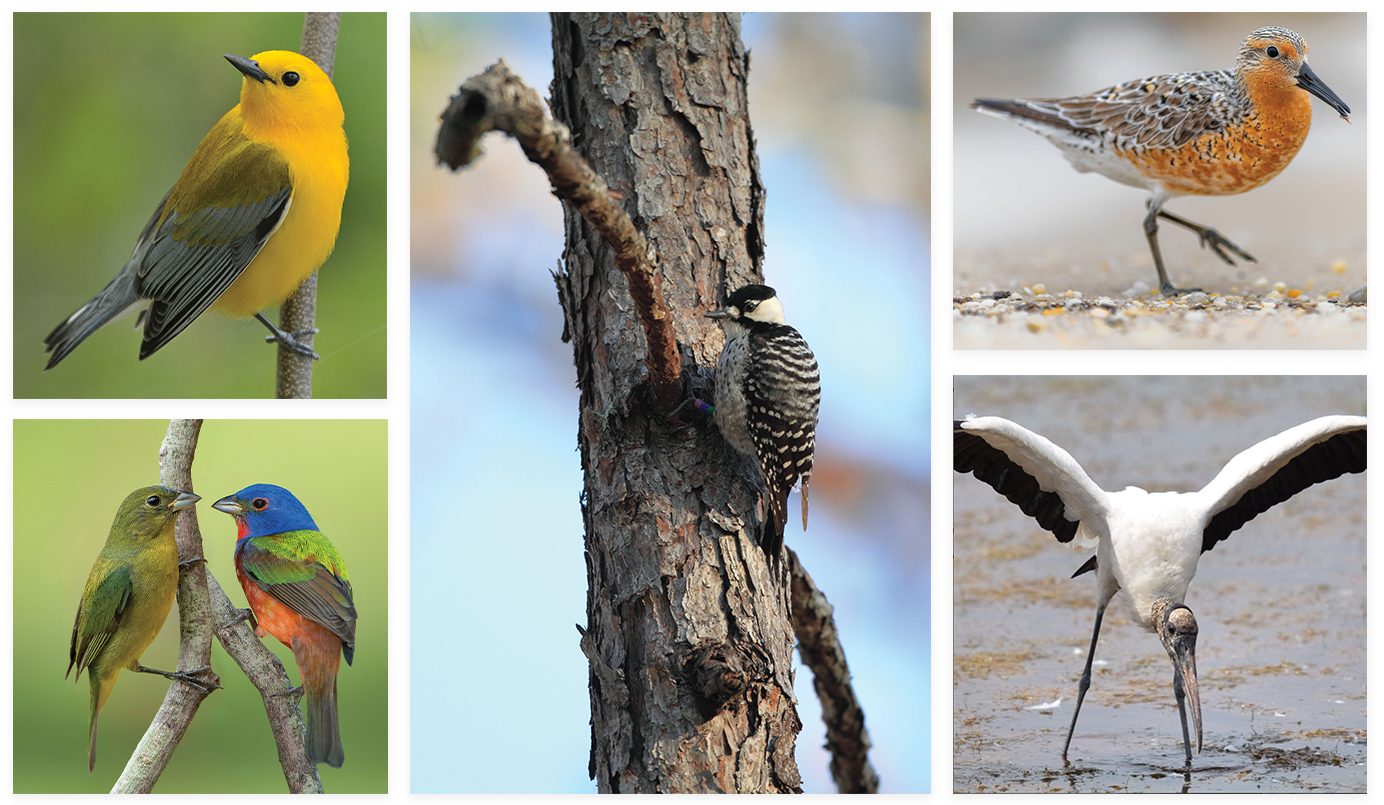Grab your binoculars to spy an extraordinary variety of birds, and learn about local conservation efforts

Standing as tall as three feet with a five-foot wingspan, the wood stork is the largest wading bird in North America. Once endangered, they’ve found a foothold in Lowcountry marshes and impoundments.
From red knots and painted buntings to wood storks and swallow-tailed kites, the Lowcountry hosts an extraordinary array of birdlife. And October is one of the best times to glimpse it. Not only has the heat lifted, but the early part of this month is when many migratory birds stop here to refuel on the way to their wintering grounds. Spotting one can be a thrill, especially when you consider the mileage they’ve covered. Plus, says Jennifer McCarthey Tyrrell, president of Audubon South Carolina, “Your chances of seeing something extra special are increased in the fall.” She’s even had black-chinned hummingbirds and a western tanager—both of whom likely got off-course—visit her yard this time of year.
We can attribute our wealth of birdlife to the region’s diverse habitats, from shoreline to bottomland hardwood forests. But pressures such as sea-level rise and encroaching development—known collectively in the environmental community as the “coastal squeeze”—threaten these ecosystems, leaving birds who depend on them for feeding and breeding vulnerable.
And while humans edging out wildlife is an age-old story—the clear-cutting of forests a century ago contributed to the extinction of the Carolina parakeet, the only native species of parakeet in the US—local experts warn that habitat loss is accelerating. For instance, the seaside sparrow may well go extinct in our lifetime, and the red-cockaded woodpecker could be right behind it. Birders are often the ones who notice such declines first, but the loss of species reverberates beyond those who fancy spotting them in the wild, cautions Clemson wildlife biologist Drew Lanham. “Birds have been bellwethers throughout history.”
Still, there are bright spots. Some wading species are finding more of a foothold here, thanks to our unique wetlands, including thousands of acres of impoundments—a legacy of the enslaved people who built them to cultivate rice. Plus, the South Carolina Department of Natural Resources (DNR) reports that several species of shorebirds have returned to nest on Crab Bank, a recently restored bird sanctuary in Charleston Harbor. Here, we’ve rounded up the latest on Lowcountry bird habitats—and a sampling of the wide range of species that call them home
Public Viewing Areas - Grab your binoculars, Charleston has an extraordinary array of birds >>SEE THE MAP HERE

(Clockwise from top left) Prothonotary Warbler; Red-cockaded Woodpecker; Red Knot; Wood Stork; Painted Buntings.
Coastal
Rising sea levels and human disturbance on beaches are taking a toll on shorebirds >>READ MORE
Wetlands
The Lowcountry is blessed with a unique variety of marshlands >>READ MORE
Grasslands
Open fields have all but vanished from our landscape, but efforts are underway to change that >>READ MORE
Forests
Tree dwellers suffer as more woodlands are cleared for development >>READ MORE
Gear Up - Get ready for outdoor day trips and birding adventures >>CHECK OUT THE LATEST GEAR HERE
Backyard Birding
Welcome feathered friends with food, water, and shelter for window watching galore >>LEARN MORE HERE
Hear the sounds of a green heron, like the beauty on our cover
Photographs by MarynaG; courtesy of John James Audubon; Wiki, Sc Dept of Natural Resources; P_Vaida; Buvava Bala; Kaitlyn Hackathorn; Jim Seiferheld; Don Mammoser; Christy Hand/SCDNR taken by camera trap under SCDNR research permit BB-20-06; James W. Thompson; Terry Ross; Bonnie Taylor Barry; @feathercollector; Ed Schneider & Jim Seiferhel